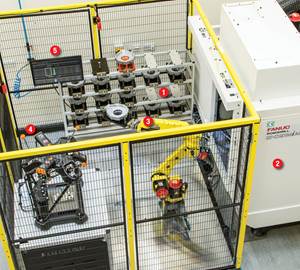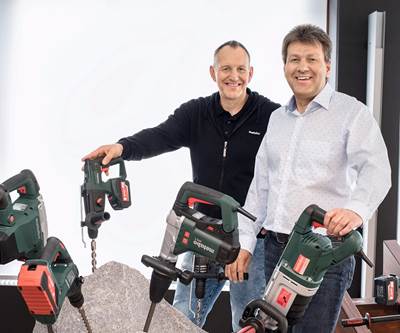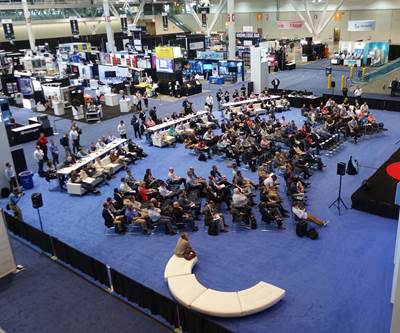7 Things to Know about the IIoT and Industry 4.0
An introduction to the standards, decision-making, training, cybersecurity, sensors, machine monitoring and cloud computing that make up the IIoT.
The Internet of Things (IoT) and Industry 4.0 are names for related concepts. These concepts do not have precise definitions. A very useful definition of the IoT was offered by Bryce Barnes, senior manager of the machine and robot segment at Cisco Systems. Speaking at the MC2 conference last April, Mr. Barnes described the IoT as the intelligent connectivity of smart devices by which objects can sense one another and communicate, thus changing how where and by whom decisions about our physical world are made. Manufacturing companies are currently implementing this “intelligent connectivity of smart devices” in their factories and on the shop floor. To distinguish these applications of the IoT from those among consumers and other realms, the term Industrial Internet of Things is often used.
The emerging Industrial IoT gives rise to what is predicted to be a sweeping change that will fundamentally reconfigure industry. It is being called the next Industrial Revolution. This revolution follows the previous three industrial revolutions, which are usually identified as mechanization (powered by steam engines in the 1800s), mass production (powered by electricity and the assembly line in the early 1900s) and automation (powered by computers in the late 1900s). As the fourth industrial revolution, it has taken on the name Industry 4.0, in keeping with the way new versions or releases of software are usually designated. This is appropriate, considering that the latest industrial revolution is powered by the Internet and Web-enabled software applications capable of processing streams of manufacturing data.
However, Industry 4.0 is also the term adopted by a coalition of universities, companies, labor unions and government bodies in Germany. This “Industrie 4.0” initiative represents that country’s vision for the future of manufacturing—not only in Germany, but also around the world. The intent of this joint initiative is to keep that country in the lead, both as a user and a developer of “smart factory” technology. This initiative encompasses a detailed conceptual framework, an explicit strategy with specific goals and milestones, and substantial funding from private and public sources. It is a model of public and private policy converging to promote advanced manufacturing.
Bernd Heuchemer, the vice president for motion control at Siemens in Germany, notes that the aim of Industrie 4.0 is to “actively drive the reshaping of industry, as it combines aspects of the physical, virtual, IT and cybersystem worlds to help create a new working environment of integrated productivity between worker and machine.” The impact of this initiative, he says, is broad: “It represents a highly dynamic point of achievement, where every company, whether large OEM, major tier supplier or small job shop, can benefit from the technologies and the communication platforms emerging in the market today, some at the speed of light.”
For purposes of the discussion here, however, we will use Industry 4.0 as the broader, more general reference to the sweeping changes ahead. It’s useful to say that the Industrial IoT and Industry 4.0 essentially have a cause-and-effect relationship. That is, the Industrial IoT is the basis for, and will result in, the fourth industrial revolution.
As a practical matter, though, this pending revolution will come about in an evolutionary fashion. Companies will implement it step by step, phase by phase. The first step, of course, is to gain an understanding of what it involves. The rest of this article is intended to help shops ease into this critical first step. The seven points selected here appear to be the most useful at this time. These points provide an introduction and background to the Industrial IoT and Industry 4.0 for metalworking companies and machine shops.
1. Key standards are creating the pathway.
The ability to connect manufacturing equipment to a Web-based network and derive substantial value from these connections is more practical and compelling than ever. Although we are in the early stages of this development, many of the foundations are in place. For example, well-developed standards such as MTConnect promote the interoperability necessary to make connecting the diverse range of manufacturing equipment on the typical shop floor possible.
In a nutshell, MTConnect provides a vocabulary, a defined set of words, by which machine tools can “express themselves” in a common language interpretable by software applications. Likewise, this standard is built on standard Internet technology (HTTP, TCP/IP, XML and Ethernet) that are inherently network friendly. MTConnect is also significant because it enables the main characteristics that are critical to systems compatible with the Industrial IoT. These systems must incorporate open software architecture, open protocols and open data models. Otherwise, proprietary elements will create barriers for users and developers of applications operating in the Industrial IoT.
Whereas MTConnect specifically facilitates the connection of machine tools and other related manufacturing equipment to a data-collection network, standards such as OPC-UA address the interoperability required for plant-wide data communication. In full, OPC-UA stands for “object linking and embedding for process control united architecture.” However, it is easier to understand it as the open, non-proprietary set of specifications that ensures that automation systems are compatible with one another.
OPC-UA provides a fix for the problem of “islands of automation” in a large factory. Because factories often have a variety of automated manufacturing processes, these systems must be able to communicate with a higher-level, plant-wide control system. OPC-UA provides the architecture for the bridges that connect these diverse automated systems to the data highway connecting the rest of the factory, so to speak. And because this highway can be connected to the Internet, it is one of the links that collectively make up the Industrial IoT.
Significantly, the organizations that oversee MTConnect and OPC-UA have worked together to make these standards compatible. As the Industrial IoT takes shape, no machine or automated system must be left behind.
2. Better, faster decisions are coming to the shop floor.
The payoff for manufacturers who implement Industrial IoT solutions lies in better decision-making. When devices are connected, the data they generate can flow into software applications that create the information individuals can use to make choices that are timely and effective. By understanding the results of these choices more fully, decision-makers can achieve strategic objectives or benchmark performance. Decisions will be based on knowledge and wisdom, not theory or guesswork. Better decisions mean fewer mistakes and less waste.
In such a smart factory, it will be possible for managers to ascertain that every element of a manufacturing system is operating at an optimal level. For example, machining parameters such as cutting speeds and feeds will reflect the settings most effective, as proven by operator experience, cutting tool manufacturer, machine builder and the online community of end users. Real-time updates to these settings will be applied immediately and automatically to maximize productivity, minimize energy consumption and promote safety. Tool libraries and toolpath options for programmers will be updated accordingly as well. (Wisely, cutting tool manufacturers have prepared for this scenario by adopting standards such as ISO 13399 to make tooling terminology uniformly interpretable by digital systems.)
Every step in the implementation of the Industrial IoT/Industry 4.0 has to be evaluated in terms of the decisions it influences. Linking each step to the value of better decisions that result must be the basis for prioritizing them and justifying them economically.
The greatest challenge for shopfloor managers will be determining
- What data to collect.
- Who will get the information derived from the data.
- How this information will be used.
- That the right decisions were made.
3. People empowerment is essential.
Perhaps the most positive and encouraging aspect of the Industrial IoT and Industry 4.0 is the explicit acknowledgment that the individual human being will continue to play an active, engaging role in manufacturing. In fact, this role will grow in importance and influence. The implications for workforce training and development are broad and substantial, because the duties and responsibilities of almost every occupation in the manufacturing enterprise will be affected. Everyone’s job is going to change, because workflow is going to change.
Athulan Vijayaragahavan, chief technology officer of System Insights (the developer of the Vimana data analytics platforms for Industrial IoT implementations) puts this development into perspective. “Although the Industrial IoT is built on software for collecting, analyzing and managing data for devices and sensors on the shop floor, the most important sources and consumers of data in a manufacturing system are people. Keeping the human in the data-information-decision-action loop is essential.” Shopfloor data consumers include operators, programmers, maintenance engineers, production supervisors and front-office business managers.
Dr. Vijayaragahavan notes that information to and from people must be pertinent (focused on the task at hand), ubiquitous (available across multiple computer platforms and interfaces via a robust network) and contextual (the meaning of information is apparent and “actionable,” that is, pointing to decisions that must be made).
4. Cybersecurity is a major issue.
Cyber threats to the Industrial IoT are real, global and growing, security experts say. Threats include theft of trade secrets and intellectual property, hostile alterations to data, and disruptions or denial of process control.
Shops should consider how to protect their data, their systems and their networks at every step toward becoming part of the Industrial IoT. Connecting machine tools to a network or cloud-based application creates a number of vulnerabilities, which are often overlooked. For example, network connections installed in a CNC may require a firewall to block unauthorized access while permitting outward communication. Machine tool data is especially sensitive because it involves critical information about product design. CNC tool paths and inspection routines for measurement probes, for example, represent the dimensions and attributes of the intended component, and are thus a tempting target for hackers.
A number of resources are available to guide manufacturing companies to build in the protection needed to minimize these threats as they implement the smart, connected factory. A good first read is the “Guide to Industrial Control Systems (ICS) Security” (NIST Special Publication 800-82) from the National Institute of Standards and Technology (NIST). It can be downloaded from the NIST Computer Security Resource Center here.
5. A new generation of sensors is coming.
Sensors detect and measure physical characteristics or conditions of a device. On/off states, amperage draw, temperature, pressure, vibration levels and quantities of supplies are examples of the “symptoms” sensors can sense. “Intelligent sensors” perform other functions. They can convert analog readings into a digital format; they can process or analyze this data (and perhaps be programmed to react in some calculated way); and they can transmit this data or make it available for collection across a network for use in a software application.
The location and function of sensor intelligence can vary. For some installations, it will be best to have the sensor “think for itself.” Other sensors will be part of a “groupthink” approach in which sensors and a central data analyzer work together. A hybrid of these two is also conceivable.
Sensors provide information about significant changes. A top priority is putting sensors where they can automatically detect and report changes that impinge on component viability. This information will provide warnings of impending failures and make unexpected downtime a very rare occurrence. Sensors are the key to detection, intervention and prevention.
The capability of wireless data connectivity (Wi-Fi) greatly simplifies the deployment of sensors on the shop floor. The expense and difficulty of connecting wires to these devices is minimized or eliminated. Installing sensors may require a hookup to a power source and/or an interface to existing machine control systems. Installing sensors to legacy equipment (older but usable machines and devices that have little or no electronic features) will make it possible to connect them to data collection systems and ultimately to the Industrial IoT.
The most important sensor-related questions that the Industrial IoT imposes are:
- What changes deserve attention or require a reaction?
- What decisions do sensor data influence?
- What value can be derived from these decisions?
It’s worth noting that small, low-cost sensors with remarkable processing capability and programmable features are proliferating, driven in part by interest from hobbyists, inventors, tinkerers, and developers of consumer appliances and personal healthcare products. The Arduino family of networkable hardware and software components based on an open-source electronics platform is a prominent example. Bluetooth Smart “low-energy” technology is another example of advances in device-to-device communication that will promote wireless connectivity of shopfloor sensors.
6. Machine tools will be regarded as cyber physical systems.
The term “cyber physical system” is frequently encountered in discussions of the IoT. The common definition of a cyber physical system describes it as a system in which embedded computers monitor and control physical processes through a feedback loop in a networked environment.
Flexible machining systems and machine tools with in-process measurement and closed-loop machining would seem to qualify as cyber physical systems. However, in the context of a smart factory, many devices that have not been equipped with embedded sensors or processors capable of looping them into an automatic monitoring and control system might become so equipped. Coolant chillers, compressed air lines, chip conveyors, hydraulic systems, and other pieces of auxiliary or support equipment are all candidates for this integration.
One very important application that calls for the support of cyber physical systems is comprehensive energy management in a factory. The power consumed by every device, machine and system will be measurable on a discrete level, thus making it monitorable and manageable. This development will compel factories to favor machines with onboard subsystems designed for low-energy operation and that are capable of resting in a standby mode (that is, they are only energized when needed for operation). Processes will be optimized by balancing energy consumption with speed of production. Likewise, whenever possible, energy-intensive machining operations will be scheduled for periods during the day when utility rates are low.
For now, the most useful aspect of the concept underlying cyber physical systems is the control loop. Creating control loops on multiple levels (from the device level to the enterprise level) in a factory will be part of Industrial IoT implementation. Shopfloor personnel on all levels will be “looped in” through multiple access points and data outlets on the network.
7. Cloud computing and Big Data will play vital roles.
Cloud computing simply means that an application (a software program developed for a specific purpose) is running on computer processors located remotely rather than on a user’s on-site computers. Users interact with the application in the cloud via a network, usually the Internet. Because diagrams of information technology network configurations often depict remotely-shared computing resources as encircled by a cloud-shaped outline, the “cloud” has become a handy nickname for this approach. Remote storage of data can also be cloud-based. The capacity of the cloud to store and process data is virtually unlimited. Storing and processing data remotely is generally more economical, flexible and secure than on-site alternatives. The cloud is also more readily scalable, that is, its capacity can be expanded rapidly to meet growing demand.
The connectivity envisioned by the Industrial IoT implies that streams of data will flow to and from connected systems. These streams of data may be massive. Big Data has become the term for the ability to find significant trends or emerging patterns detectable only by rapidly scanning many millions of unstructured data items in different formats from a multitude of diverse sources. The ability to gather and access the huge mass of data generated by the connected factory (and then make sense of this data) is what Big Data brings to the Industrial IoT.
This scenario will suffice to capture the power of Big Data analytics for manufacturers. Consider a manufacturing company whose end products consist of components that have crossed numerous CNC machines in its own factories, and in those of its smaller subcontractors and job shop suppliers. Those same components may have been touched by thousands of cutting tools along the way. Each of these CNC machines is being monitored to create streams of data about uptime, internal alarms, operational status signals, energy usage, and thousands of other performance characteristics and parameters. Likewise, each of the cutting tools is being monitored for when, where and how it was used, with details about the speeds, feeds, tool paths, coolant conditions and a host of other performance records added to the mix of data streaming into massive online databases in the cloud. All of this machine and cutting tool data is associated with each and every one of the components that reach the company’s customers in a finished, working assembly.
If a critical component fails, it will be possible to trace that failure to the cause, which may be as subtle as a slight deviation in the servo response of a certain machine tool axis drive. Clues to avoiding this problem in the future will also be discernible. Likewise, tracking down all the similar parts that might be subject to the same failure mode is a possibility.
Many other findings will be available. For example, we may learn that a certain CAM programming algorithm helps a particular style of end mill remove the most material with the least energy. Programmers will be instantly notified of this option when using cloud-based programming resources.
Getting Started on the IoT Pathway
So how does a machine shop begin to bring on the power of the Industrial IoT? A practical option for many companies will be to install a comprehensive machine monitoring system. Dave Edstrom, the chief technology officer at Memex, recommends this approach because machine monitoring introduces key elements necessary for wider Industrial IoT connections. For example, even basic machine monitoring can require equipping machines with the necessary interfaces for data collection and reporting; establishing the framework for a shop-wide network; getting the shop workforce accustomed to a data-driven manufacturing environment; training managers to recognize and deal with data management issues (who gets what report and what do they do with the info); and so on.
“Most shops that implement a monitoring system such as MERLIN start with a small number of machines to ease the learning curve and get everyone on board,” Mr. Edstrom says. MERLIN (Manufacturing Execution Real-time Lean Information Network) is Memex’s manufacturing execution system and machine-to-machine communications platform that is MTConnect compliant. “Supervisors and operators must be involved in evaluating the machine monitoring software, encouraged to provide input and given a clear understanding of the direction the company is taking with this implementation,” he adds. He also notes that, from the start, machine data must translate into actionable information that helps both the operators and managers. Operators must feel that this is a tool for them and not Big Brother looking over their shoulders.
Installing large display screens to show reports such as machine utilization is typically part of a shop’s pilot project. Visual awareness creates quick (and significant) results, because shopfloor personnel instinctively focus their thinking and practices on improvements that boost utilization, Mr. Edstrom reports.
Once a shopfloor monitoring system is in place, the shop can deploy additional sensors to augment their dashboards and reports to improve performance and lower costs. “Monitoring software that can speak to a wide range of devices and provide real-time dashboards with notification triggers and reporting to drive down costs and drive up productivity in a secure and predictable way will be the heart of the Industrial IoT,” Mr. Edstrom concludes.
3 Industrial Imperatives
The Industrial IoT and the fourth industrial revolution it seemingly ushers in are very fluid and far-reaching developments. This means that planners and implementers must be flexible, alert and bold. The seven points presented here may soon be supplanted by new issues, concerns and opportunities.
Let’s simply end with a summary that includes at least three main imperatives:
Take heed.
The Industrial IoT is real and taking shape here and now. It is also happening “there and then” in the sense that your global competitors are implementing it, too, and may be ahead with prior implementations.
Keep your eye on the prize.
Better decision-making is the main benefit of creating a connected factory in which machines and people are smarter.
Start small, but plan big.
Whether it is machine monitoring or cloud-based CAM programming, the initial steps have to be manageable, transparent and respectful of the individual.
Related Content
Protecting Your Automation Investments
Shops need to look at their people, processes and technology to get the most of out their automation systems.
Read MoreEasy-To-Install Data Acquisition System for Real-Time Monitoring Across Brands
cnSEE from All World Machinery Supply combines easy installation and monitoring across multiple machines.
Read MoreHow this Job Shop Grew Capacity Without Expanding Footprint
This shop relies on digital solutions to grow their manufacturing business. With this approach, W.A. Pfeiffer has achieved seamless end-to-end connectivity, shorter lead times and increased throughput.
Read More5 Stages of a Closed-Loop CNC Machining Cell
Controlling variability in a closed-loop manufacturing process requires inspection data collected before, during and immediately after machining — and a means to act on that data in real time. Here’s one system that accomplishes this.
Read MoreRead Next
Quality Data Management Software Improves Process Reliability
Metabowerke GmbH’s tracking of data was inefficient and cumbersome. Zeiss’s PiWeb quality data management software reduced machine setup time by half and increased process reliability.
Read MoreUsing Data to Do Better in Manufacturing
Although the Smart Manufacturing Experience 2018 event in Boston may not have provided a simple, clear definition of “smart manufacturing,” it did provide a broad experience of what smart manufacturing can be like.
Read MoreIMTS 2024: Trends & Takeaways From the Modern Machine Shop Editorial Team
The Modern Machine Shop editorial team highlights their takeaways from IMTS 2024 in a video recap.
Read More


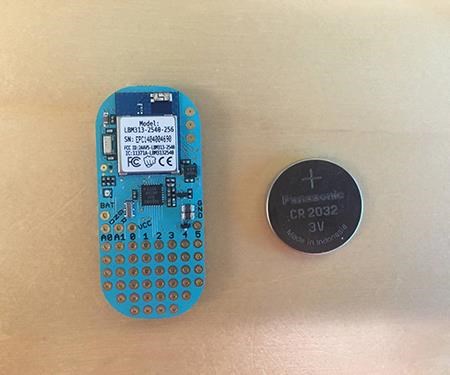
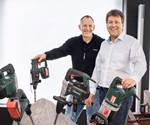

















.jpg;maxWidth=300;quality=90)






